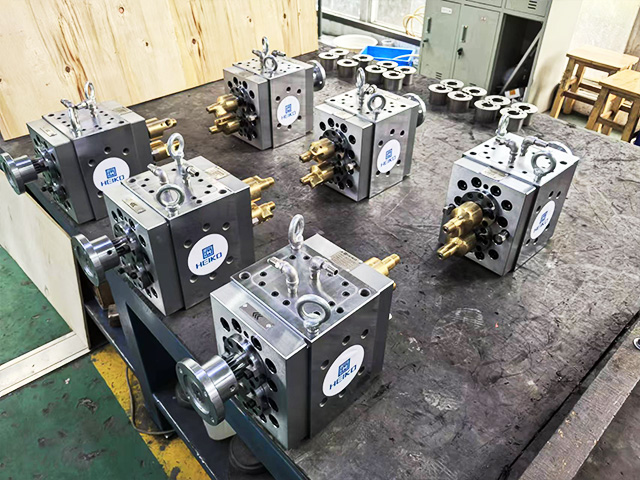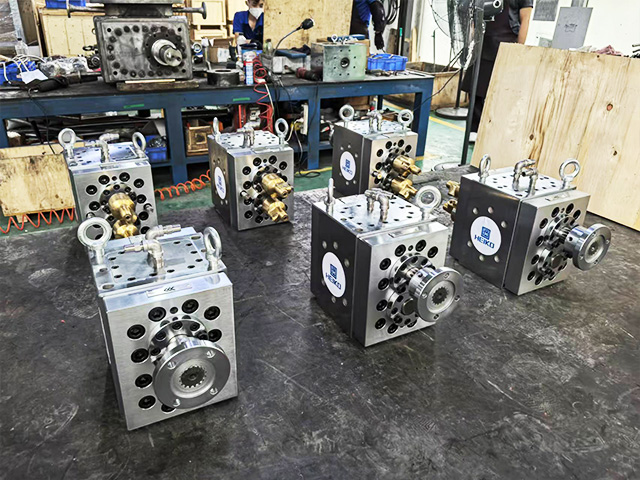Detailed description of the lubrication system of the melt pump
The lubrication system of a melt pump is a crucial component, primarily utilizing the polymer melt it conveys as a lubricant to achieve self-lubrication. Below is a detailed description of the lubrication system of a melt pump:
I. Working Principle of the Lubrication System
The self-lubrication system of a melt pump leverages the pressure difference between the high and low-pressure chambers of the pump. It relies on gear engagement to press the melt from the high-pressure chamber into the bearings from the inside. As the gear shaft rotates, a lubricating film forms on the surface of the gear shaft. This lubricating film not only serves the purpose of lubrication but also prevents the melt from remaining in the bearings for too long, avoiding melt decomposition due to shear thinning. The lubricated melt leaks out from the other end of the bearings, collects through the bypass grooves on the side plate, and then enters the low-pressure chamber, ensuring that the polymer melt involved in lubrication is constantly renewed.
II. Characteristics of the Lubrication System
No Pollution: The melt pump uses the melt it conveys as a lubricant, eliminating the pollution issues that may arise from traditional grease lubrication.
Self-Renewing: The lubricating film is constantly renewed within the bearings, ensuring the continuity and stability of the lubrication effect.
High Adaptability: Since polymer melts often possess lubricating properties, the lubrication system of the melt pump is suitable for conveying various polymer melts without the need to change lubricants.
Unique Structure: The pump body of the melt pump is uniquely designed to ensure stable pressure differences between the high and low-pressure chambers, providing necessary power for the self-lubrication system.
III. Maintenance of the Lubrication System
To ensure the stable operation of the melt pump, regular maintenance of the lubrication system is required:
Checking the Lubricating Film: Ensure that a stable lubricating film always exists on the surface of the gear shaft. Insufficient or unstable lubrication may lead to accelerated bearing wear or even cause malfunctions. Cleaning the Pump Body: Regularly clean the interior of the pump body to remove residual melt and impurities, preventing clogging and wear. When cleaning, use appropriate solvents and tools to avoid damaging the pump body.
Inspecting Bearings: Regularly check the wear condition of the bearings. If the bearings are severely worn or damaged, they should be replaced promptly. Additionally, check the sealing performance of the bearings to ensure that the melt does not leak outside the bearings.
Monitoring Temperature and Pressure: Use temperature sensors and pressure sensors to monitor the temperature and pressure of the pump body in real-time, ensuring it operates within a safe range. If the temperature and pressure rise abnormally, immediately shut down the pump for inspection and troubleshooting.
In summary, the lubrication system of a melt pump is characterized by no pollution, self-renewal, high adaptability, and a unique structure. To ensure its stable operation, regular maintenance and inspection of the lubrication system are necessary.
Email: sale@heikomachinery.com
WhatsApp: +86 13803717447
Previous:The glue melt pump
Next:How to choose the melt pump for PVC granulation production line

